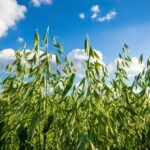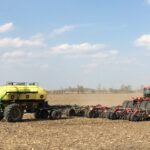Corn stalks and soybeans
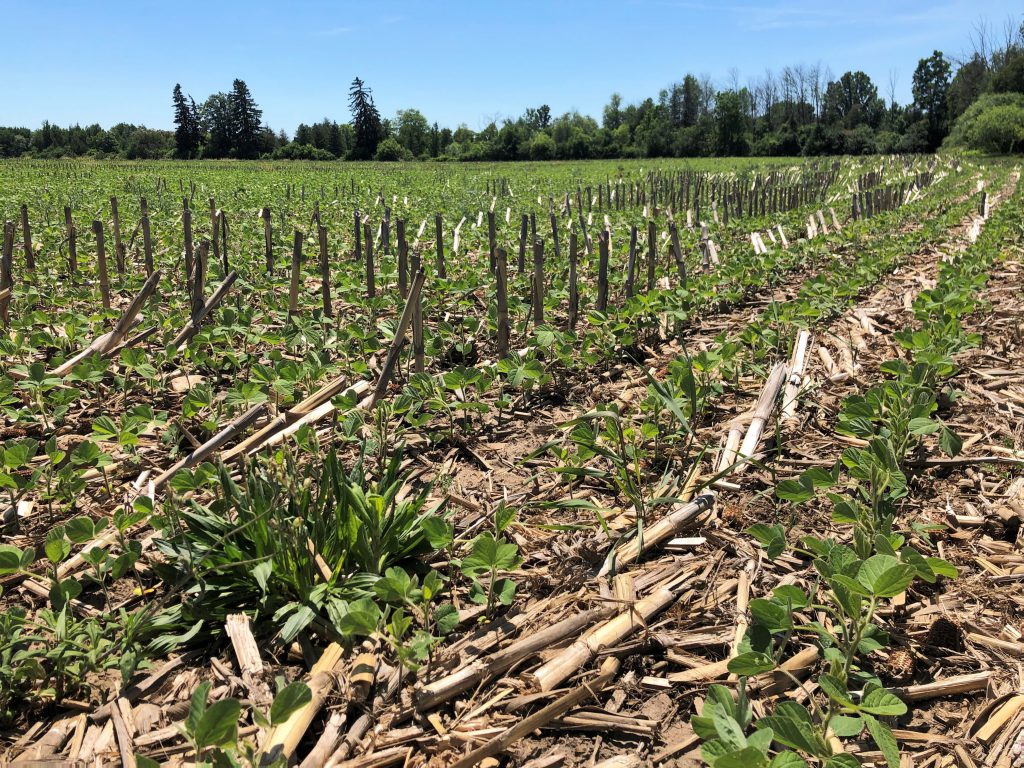
If you have been driving around Ontario in the past few weeks, you may have noticed the newly planting and growing grains! Ontario’s grains were planted this past spring and have started to grow and pop up in rows. But one of our team members here at Good in Every Grain noticed something unusual- growing soybeans plants planted in between standing corn stalks.
Why were the soybeans planted like this?
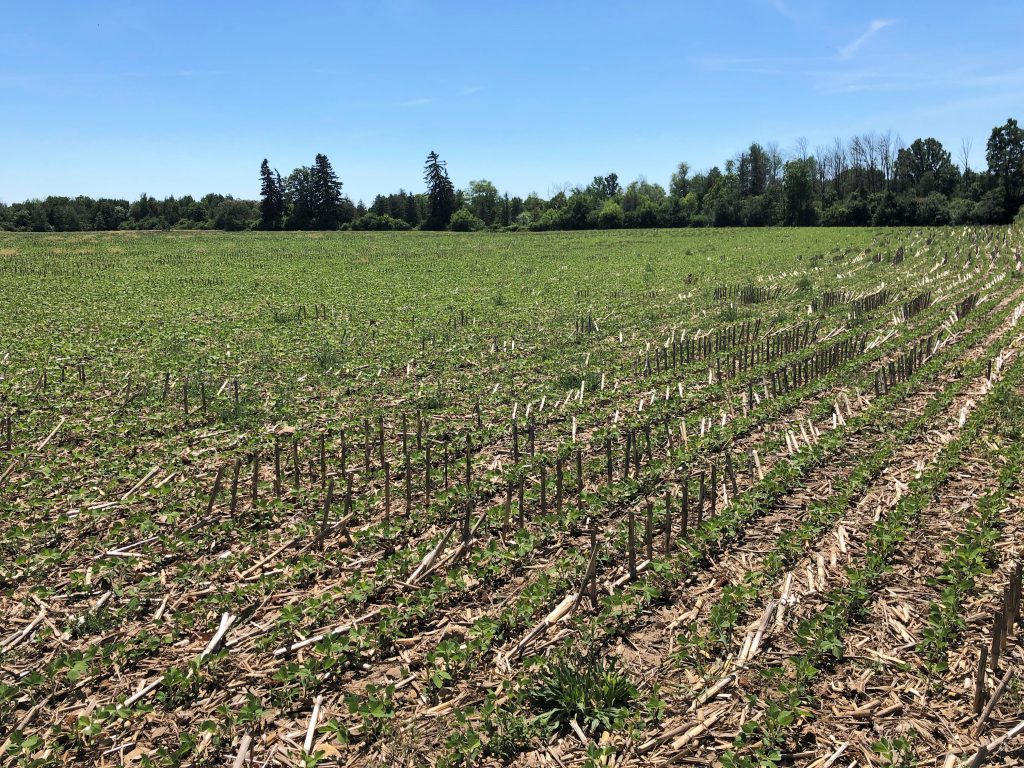
There are a few reasons why this field of soybeans was planted in and amongst the standing corn stalks, and the most common reason is that they were no tilled or planted using a no tillage method. No till stands for a farm practice where Ontairo grains are planted in fields without any tillage – or no disturbing the soil before planting. This means the soil wasn’t ploughed, cultivated or tilled at all before the soybeans were planted. Thus, why the corn stalks from last fall are still standing in the field.
No till is a great sustainable practice as it helps to keep the soil in place and reduce any soil erosion. No till is also a great practice that helps farmers reduce their carbon footprint- they only need to drive over the fields once as opposed to a few times. Tillage requires farmers to drive over the field disturbing the soil, then drive over the same field again planting the seeds. This practice also helps during a dry spring by keeping moisture in the ground. The soil isn’t disturbed and any moisture below ground remains there for the seeds to be planted into.
There are certain challenges with no till planting practice, and not every field or farm can 100% apply this practice. No two farms are the same and can input the same farming practices each field and farm have their ow unique characteristics that requires specific management to grow quality grains. For example, heavy clay soils or fields that are really wet sometime need to be tilled to dry out. Soil conditions needs to be dry to plant seeds into. Or if there is a lot of plant debris left on the surface of a field, it can sometimes act as barrier and not allow the growing crops to push through the soil to reach sunlight on the surface.
But, on a year like this where many farms across Ontario are experiencing dry and hot weather there were a lot more grains planted using no till practices as fields did not need to be tilled to dry out- they were already pretty dry!
How will the soybeans be harvested?
Our team member that noticed this also had a very good questions- how will this farmer harvest the soybeans in the fall if the corn stalks are still standing?
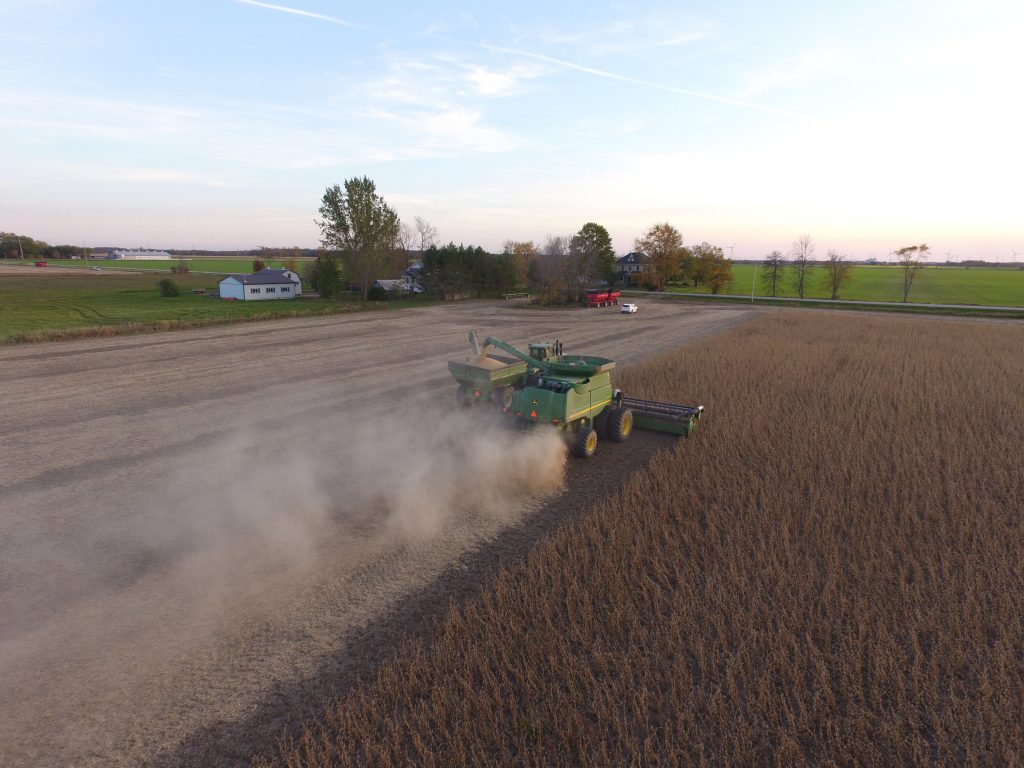
Well, to put it simply there is a good chance those corn stalks will be combined alongside the mature soybeans. They’ll be cut, put through the combine and tossed out the back along side the leftover soybean plant parts to be organic matter on the soil surface.
Sometimes things in a grain field look funny or confusing- like plants being brown and “dead”. But in most cases, it is a natural or sustainable process the growing grains go through throughout their season. In the case of soybeans being planted in the corn stalks, this funny image is a sustainable practice that made sense in this field!

